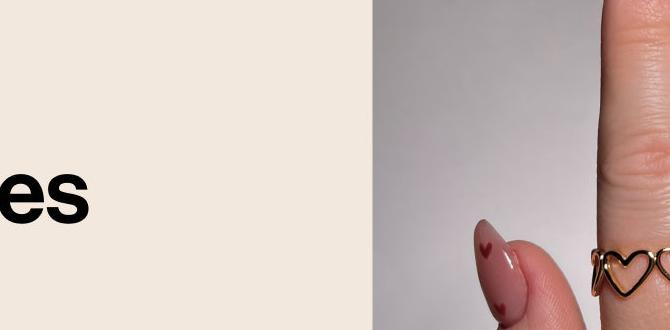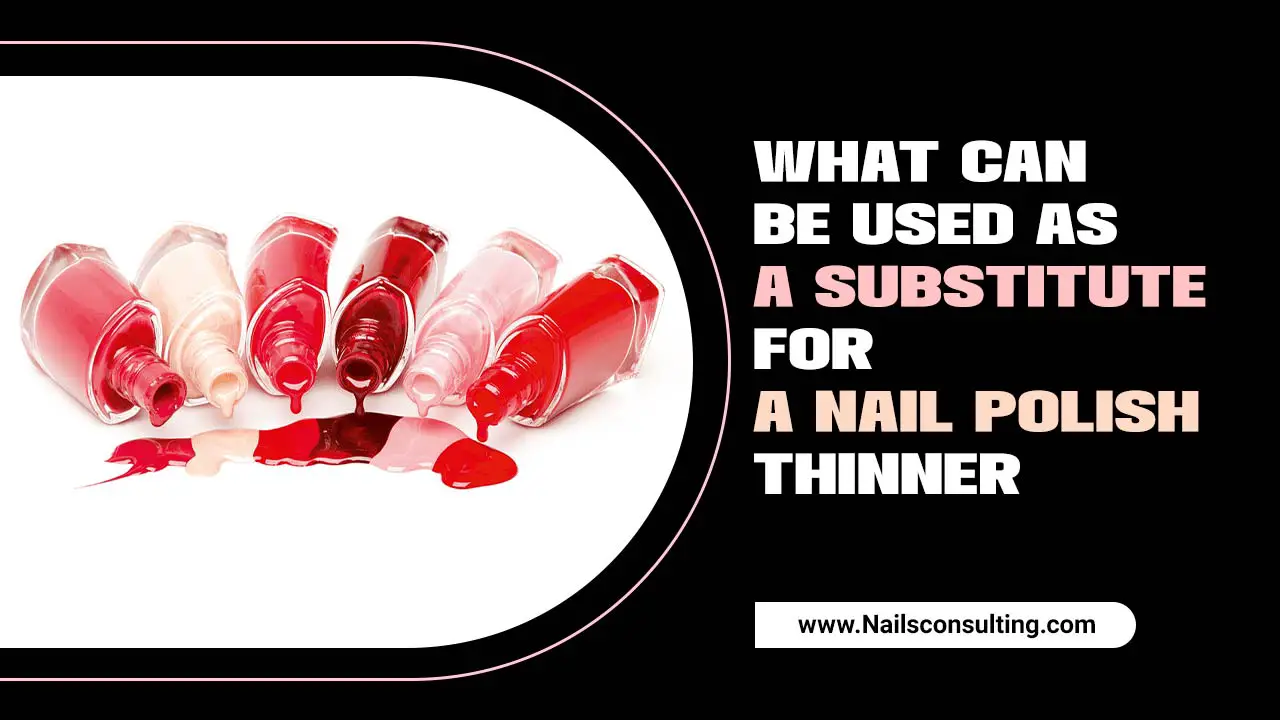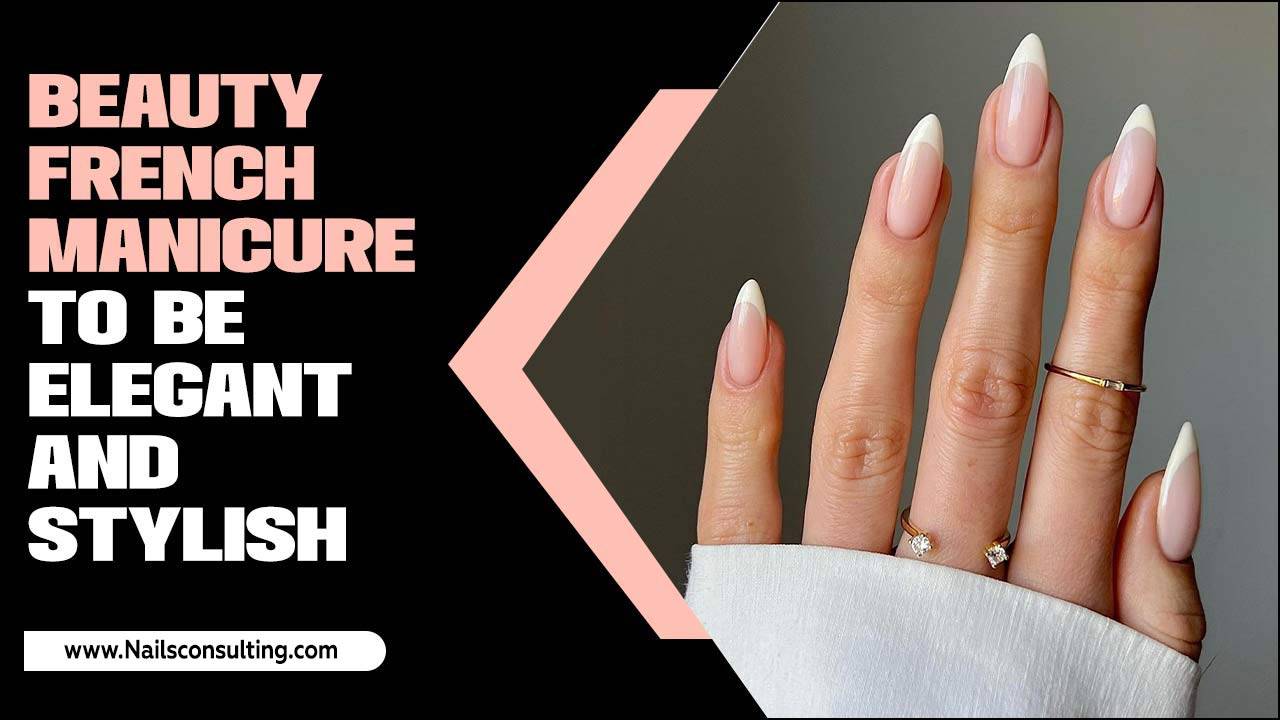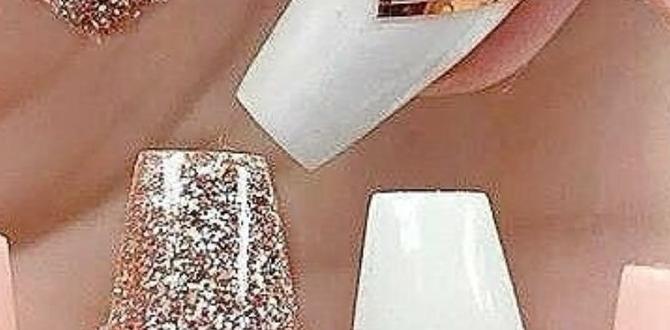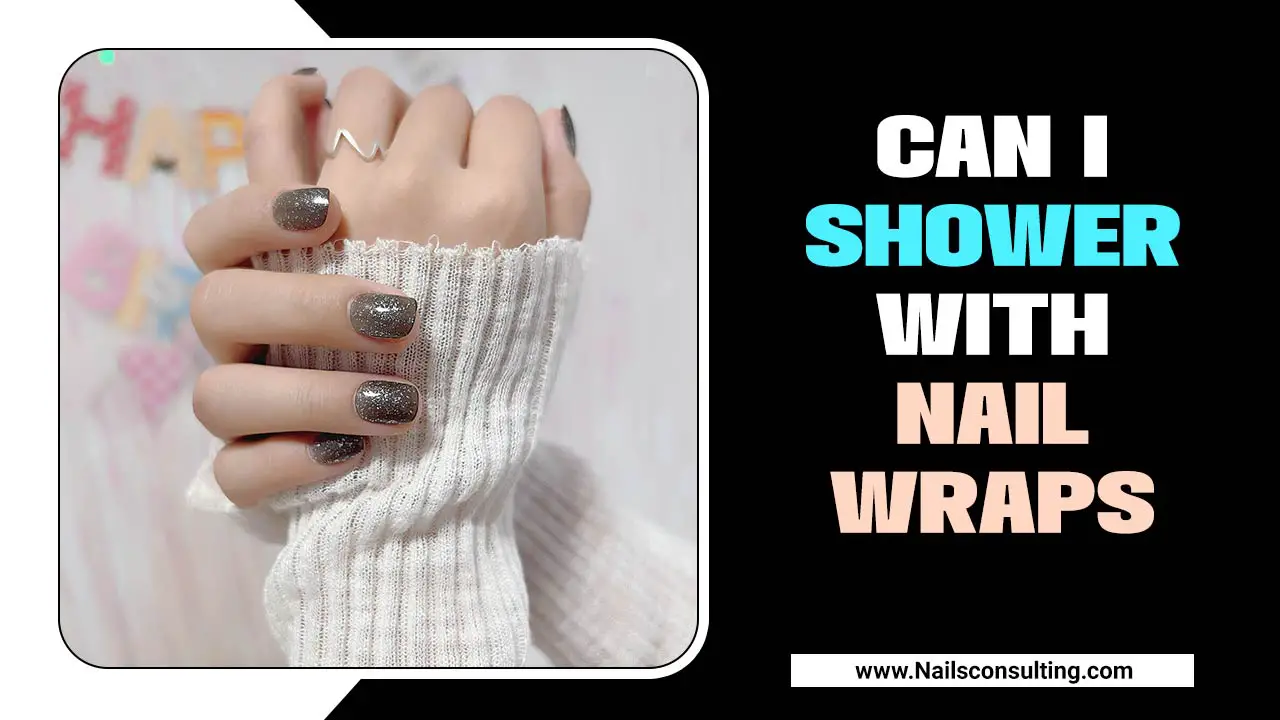Tropical nail designs are a vibrant and fun way to express your style! These stunning looks, featuring bright colors and nature-inspired motifs, are surprisingly easy to achieve with a few key techniques and tools. Get ready to bring a slice of paradise to your fingertips!
Dreaming of sunny beaches and lush palm trees? Bringing those vacation vibes to your fingertips is easier than you think! Tropical nail designs offer a burst of color and playful energy, perfect for boosting your mood or complementing a summer outfit. But if you’re new to nail art, the idea of creating intricate designs might seem a bit daunting. Don’t worry! We’re here to break it down into simple, fun steps you can easily follow at home. Get ready to transform your nails into a mini tropical getaway!
Why Tropical Nail Designs Are a Must-Try
Tropical nail designs are more than just pretty patterns; they’re a mood booster, a style statement, and a fantastic way to unleash your inner artist. Think about it: a flash of vibrant color, a hint of exotic flora, or a playful depiction of ocean waves. These designs instantly evoke feelings of warmth, relaxation, and fun. They’re perfect for vacations, summer parties, or just when you need a little escape from the everyday hustle.
Whether you prefer bold and bright or subtle and chic, there’s a tropical design for everyone. And the best part? You don’t need to be a professional nail technician to create them. With a few essential tools and a little practice, you can achieve stunning results right at your own vanity. Let’s dive into what makes these designs so special and how you can make them your own!
Essential Tools for Your Tropical Nail Art Kit
Getting started with tropical nail designs doesn’t require a professional salon setup. A few key tools will have you well on your way to creating stunning looks. Investing in these basics will make the process smoother and the results more polished. Remember, good tools make good art easier!
- Nail Polish in Bright, Tropical Shades: Think vibrant blues, fiery oranges, sunny yellows, lush greens, and hot pinks. Don’t forget white and black for accents and details.
- Base Coat: This protects your natural nails from staining and helps your colors adhere better.
- Top Coat: A good top coat seals in your design, adds shine, and makes your manicure last longer. Look for a quick-dry formula to save time!
- Dotting Tools: These come in various sizes and are perfect for creating dots, flowers, and other small details.
- Thin Nail Art Brushes: A fine-tip brush is essential for drawing thin lines, intricate patterns, and drawing details like leaf veins or water ripples.
- Striping Tape or Nail Stencils: These help create clean lines and sharp shapes, like geometric patterns or French tips with a tropical twist.
- Toothpicks or Orange Sticks: Great for fine-tuning, cleaning up edges, and even creating small, organic shapes.
- Rhinestones or Glitter: For that extra sparkle and pop, especially to mimic dew drops or shimmering water.
- Nail Polish Remover and Cotton Swabs: For cleaning up mistakes and making your nails look neat.
Beginner-Friendly Tropical Nail Design Ideas & How-Tos
Ready to get creative? These designs are perfect for beginners and can be customized with your favorite tropical colors. We’ll focus on techniques that are easy to execute but deliver maximum tropical impact!
1. The Polka Dot Paradise
Polka dots are a classic for a reason – they’re simple, cheerful, and instantly add a playful vibe. In tropical colors, they scream fun!
How to Achieve It:
- Prep Your Nails: Start with clean, dry nails. Apply a base coat and let it dry completely.
- Choose Your Base Color: Select a vibrant tropical color, like a turquoise blue or a sunny yellow, as your base. Apply two thin coats for even coverage and let it dry fully.
- Dotting Time: Dip your dotting tool (or the blunt end of a toothpick) into a contrasting polish color, like hot pink or bright orange.
- Start Dotting: Gently touch the polish-loaded tip to your nail to create a dot. Work your way across the nail, varying the size of the dots if you like. You can create random patterns or neat rows.
- Add More Colors: Use different dotting tools or clean your current one and switch to another fun tropical shade for more dots.
- Seal the Deal: Once all your dots are dry, apply a generous layer of top coat to protect your design and add shine.
2. Simple Sunset Ombre
Capture the magic of a tropical sunset with a beautiful ombre effect. This gradient transition is surprisingly easy and always looks sophisticated.
How to Achieve It:
- Base Color: Apply a sheer nude or a soft white base coat. This helps the transition colors pop.
- Gather Your Sunset Colors: You’ll need at least two, preferably three, colors that blend well, like yellow, orange, and pink, or pink, purple, and deep blue.
- The Sponge Technique:
- Cut a small piece of a makeup sponge (the kind with a fine texture works best).
- Apply stripes of your chosen colors directly onto the sponge. Make sure the colors are touching each other.
- Quickly dab the sponge onto your nail. You want to deposit the color onto the nail while leaving minimum sponge texture.
- You might need to reapply polish to the sponge and dab again to build up the color intensity and smooth out the gradient.
- For a cleaner edge, after each dab, clean the polish off your skin using a brush dipped in nail polish remover immediately.
- Perfect the Blend: If the lines between colors are too harsh, you can use a clean, dry sponge or a fine nail art brush to gently blend them further.
- Top Coat Triumph: Once the ombre is dry, apply a clear top coat to smooth out the texture and add a glossy finish.
3. Leafy Greens Accents
Incorporate the lushness of tropical foliage with simple leaf designs. These look elegant and are easier than they appear.
How to Achieve It:
- Base Polish: Choose a bright, beachy color like coral, white, or sky blue. Apply and let dry.
- Leaf Shape with a Brush:
- Dip a thin nail art brush into a deep green or even a metallic gold polish.
- Starting at the natural nail line or near the cuticle, draw a curved line upwards, thinning out as you go. This will be the center vein of your leaf.
- Now, on either side of this center line, use a slightly thicker stroke to create the leaf shape. Think of a gentle curve.
- You can add a tiny dot at the base to represent the stem.
- Alternative Leaf Shape (Dotting Tool):
- Use a fine dotting tool and a green polish.
- Make a small dot.
- Then, gently drag the dotting tool away from the center to create a teardrop or elongated leaf shape.
- You can make several of these smaller leaves clustered together.
- Add Depth (Optional): For a more realistic look, add a slightly darker green or a touch of black to the center vein or undersides of the leaves.
- Seal It: Apply a protective top coat.
4. Tropical Flower Power
Simple floral designs can bring an immediate tropical feel. Think hibiscus or plumeria.
How to Achieve It (Simple Hibiscus):
- Base Color: A bright pink, coral, or yellow works beautifully. Apply two coats.
- Petal Dots: Using a medium-sized dotting tool and a lighter shade of your base color (or white), create five to six dots in a circle on your nail. These will be your petals.
- Shape the Petals:
- With a fine nail art brush and the same petal color, gently connect the dots and slightly round out the edges to form petals.
- You can overlap them slightly for a fuller flower effect.
- Center Detail: Use a small dotting tool and a contrasting color (like dark pink, orange, or even yellow) to add a small dot or a cluster of tiny dots in the center of the flower.
- Finishing Touches: Add a tiny green leaf accent next to the flower using your fine brush if desired. Seal with a top coat.
5. Beachy Waves & Stripes
Mimic the serene ocean with simple wave patterns or classic stripes.
How to Achieve It (Waves):
- Sky Blue Base: Apply a light sky blue or a sandy beige as your base color.
- Draw the Waves: Using a fine nail art brush and a slightly darker blue or white polish, draw simple, curved lines across your nail. Think gentle, flowing shapes. You can layer multiple wavy lines for depth.
- Seaglass Accent: Add a few small white dots or short white dashes between the waves to mimic sea foam.
- Seal It: Apply your top coat.
How to Achieve It (Stripes):
- Color Block: Paint your nails in alternating bright tropical colors (e.g., one nail orange, the next green, the next yellow).
- Add Thin Stripes: Once dry, use a fine nail art brush and a contrasting color (like white or black) to draw thin vertical or horizontal stripes over the base colors.
- Stencils for Precision: For perfectly straight stripes, try using striping tape. Apply the tape after the base color is dry, paint over it, and then peel off the tape while the polish is still wet for clean lines.
- Top Coat: Finish with a protective top coat.
Bringing it All Together: Tropical Nail Design Combinations
Don’t be afraid to mix and match! Combining different tropical elements can create unique and eye-catching designs. Here are a few ideas for combining techniques:
- Accent Nail Magic: Keep most nails a solid, vibrant tropical color, and make one accent nail a detailed tropical design – perhaps a pineapple, a flamingo, or a floral pattern.
- Ombre with a Twist: Start with a sunset ombre on all nails, and then add a simple leaf accent or a few polka dots on one or two nails.
- Stripe and Dot Combo: Paint your nails a solid base color, then add thin stripes to one nail and polka dots to another.
Maintaining Your Tropical Masterpieces
To keep your stunning tropical nail designs looking fresh and vibrant for as long as possible, follow these simple maintenance tips:
- Always Use a Top Coat: This is your design’s best friend. Reapply every 2-3 days for extra protection and shine.
- Moisturize Regularly: Keep your nails and cuticles hydrated with cuticle oil and hand cream. This prevents chipping and keeps your nails healthy.
- Be Gentle: Avoid using your nails as tools. Open cans or scrape things with your fingertips can easily chip or damage your design.
- Wear Gloves: When doing chores, gardening, or anything involving harsh chemicals, wear rubber gloves.
- Touch-Ups: If you notice a small chip, try to carefully touch it up with a bit of clear polish or the base color.
Choosing the Right Tropical Design for You
The beauty of tropical nail designs is their versatility. There’s a style to suit every personality and occasion. Consider these factors when choosing your next design:
- Your Personal Style: Are you bold and expressive, or do you prefer something more subtle?
- The Occasion: A beach vacation might call for vibrant hibiscus flowers, while a summer brunch could be perfect for chic wave patterns.
- Your Skill Level: Start with simpler designs like polka dots or solid brights and gradually work your way up to more intricate artwork as your confidence grows.
- Color Combinations: Think about what colors make you happy! Tropical palettes are endless, from pastel sunsets to neon jungle vibes.
Don’t be afraid to experiment! The most important thing is to have fun and let your creativity shine. The health benefits of sun exposure are a well-known topic, but the feeling of sunshine can also be captured through art!
Tools Comparison: Dotting Tools vs. Brushes
Both dotting tools and nail art brushes are invaluable for creating tropical nail designs, but they excel at different tasks. Understanding their strengths can help you choose the right tool for the job and streamline your creative process.
| Tool | Best For | Ease of Use (Beginner) | Pros | Cons |
|---|---|---|---|---|
| Dotting Tools | Creating uniform dots, small flowers, and precise accents. | Very Easy | Consistent dot size with different ends, easy to control placement, creates clean circles. | Limited in creating lines or complex shapes without multiple tools or techniques. |
| Nail Art Brushes (Fine Tip) | Drawing fine lines, intricate patterns, leaf veins, and detailed artwork. | Moderate (requires practice) | Versatile for detailed work, can create flowing lines and complex designs, allows for more artistic expression. | Can be tricky to get consistent line thickness, requires a steady hand, needs proper cleaning to avoid drying out. |
For beginners, starting with a set of dotting tools is often the easiest way to get started with adding detail. Once you’re comfortable with dots and simple shapes, incorporating a fine-tip brush will open up a world of more complex designs, like the delicate veins on a tropical leaf or intricate floral patterns. Many nail art kits include both, offering the best of both worlds.
The Psychology of Color in Tropical Designs
Color plays a huge role in how we perceive things, and in tropical nail designs, it’s what really brings the “wow” factor! The colors we associate with tropical locations – bright blues, vivid greens, sunny yellows, and fiery reds and oranges – are known to evoke feelings of happiness, energy, and relaxation. According to color psychology, warm colors like yellow and orange can stimulate creativity and optimism, while cool colors like blue can promote a sense of calm and serenity. Layering these hues in your nail art can literally put you in a better mood!
The contrast between these colors is also key. Think of a vibrant pink hibiscus against a lush green leaf, or a bright orange sunset over a deep blue ocean. These bold combinations jolt our senses and create a visually exciting experience. Even subtle pastel versions of these colors, like a soft peach or a light mint green, can still evoke a tropical feel, offering a more subdued yet equally charming look. Learning about the impact of color can help you choose combinations that not only look stunning but also make you feel amazing!
Frequently Asked Questions About Tropical Nail Designs
Q1: What are the easiest tropical nail designs for beginners?
The easiest designs include vibrant solid colors, simple polka dots using a dotting tool or toothpick, and basic striped patterns. You can also try a simple two-color gradient ombre using a sponge.
Q2: What colors are essential for tropical nail designs?
Essential colors include bright blues (like turquoise and aqua), sunny yellows, vibrant greens (lime, emerald), hot pinks, corals, oranges, and white for accents. Black can also be useful for outlines and fine details.
Q3: How long do DIY tropical nail designs usually last?
With a good base coat, vibrant polishes, and a quality top coat, DIY tropical nail designs can last anywhere from 5 to 10 days, depending on your daily activities and how well you maintain them.
Q4: Can I create tropical nail designs without special nail art brushes?
Yes! You can use toothpicks for dots and small details, a fine-tipped pen for lines (though nail polish pens are better if available), and even the edge of a business card or a sponge for textured effects. However, investing in a few basic nail art brushes will significantly enhance your design capabilities.
Q5: How do I prevent nail polish from chipping on tropical designs?
Ensure your base coat and top coat are applied correctly and are fully dry. Reapply your top coat every 2-3 days. Also, avoid using your nails as tools and wear gloves for household chores.
Q6: What is the best way to clean up mistakes when doing tropical nail art?
The best way is to use a fine brush (like a liner brush or even a clean, old makeup brush) dipped in nail polish remover. Gently trace around the edges of your design to remove any excess polish or smudges. Cotton swabs can also work but can sometimes be too bulky.
Conclusion: Your Tropical Nail Art Adventure Awaits!
There you have it – your guide to creating absolutely stunning tropical nail designs right at home! From the simplest polka dots to vibrant ombres and elegant leafy accents, we’ve explored

